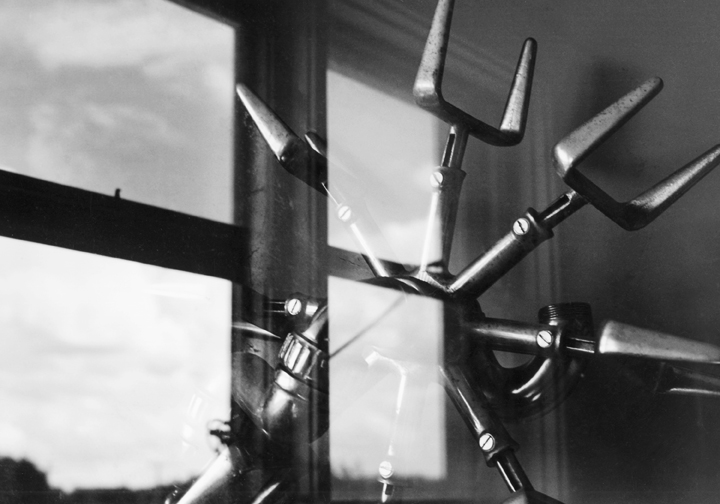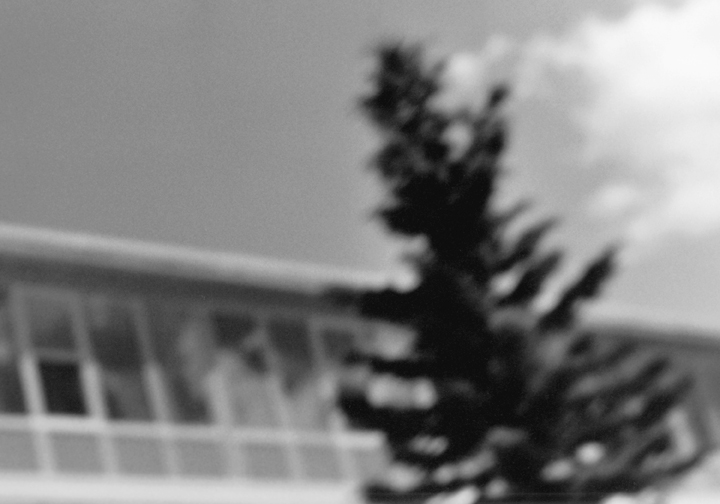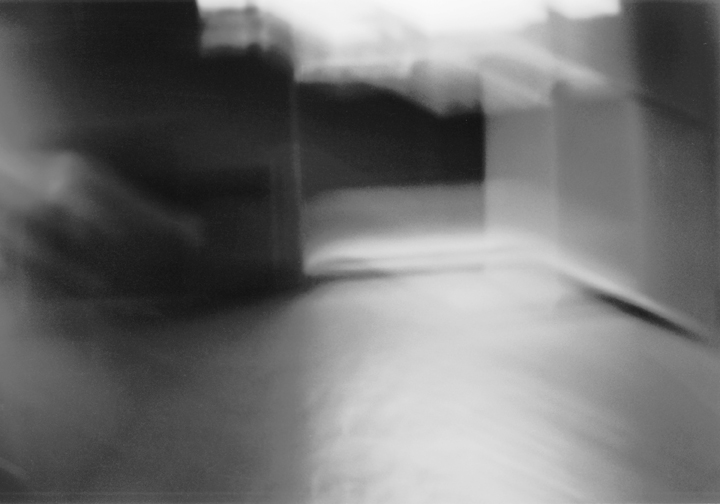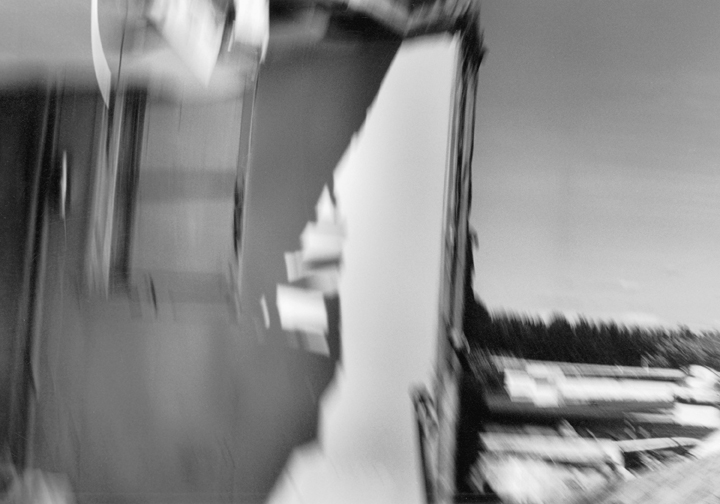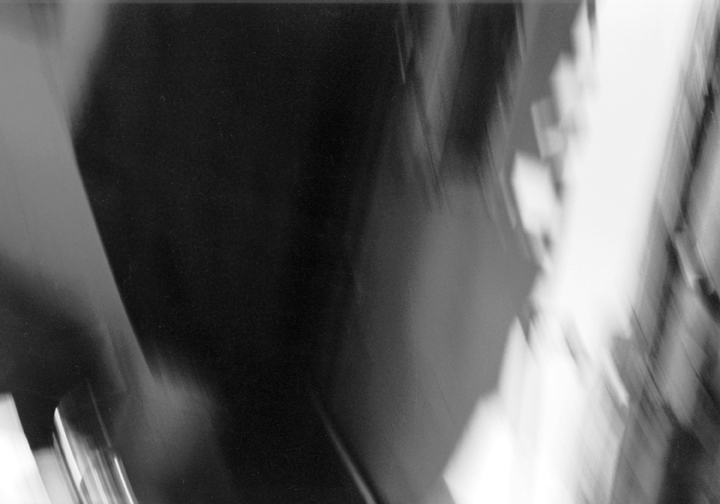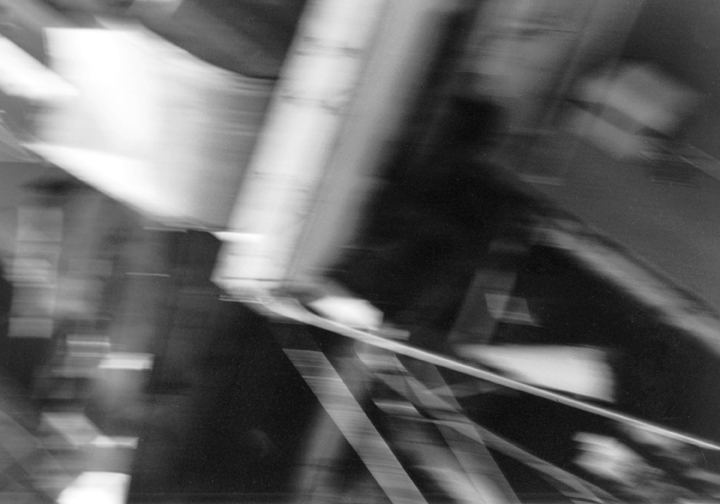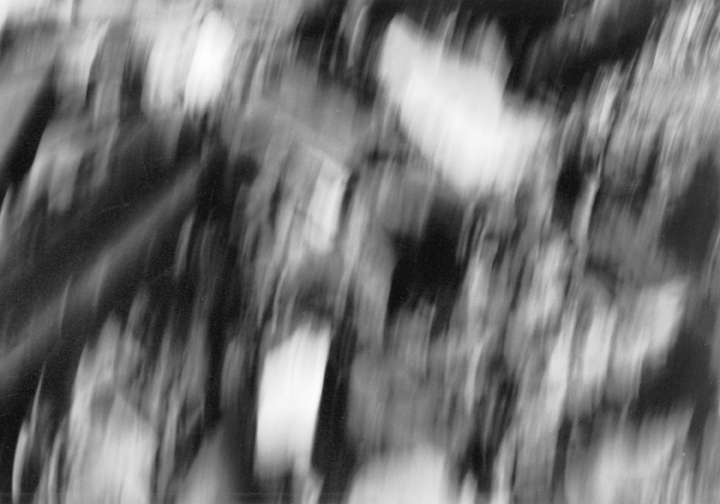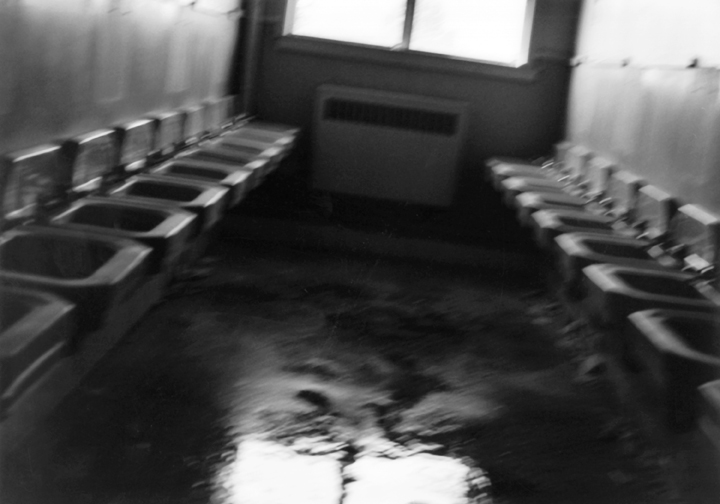by Anne-Marie Garceau
Aside from the demolition machines attacking a distant wing of the boarding school, the site is deserted. The photographer enters the condemned building, determined to make the silence speak.
For some twenty years, the boarding school’s classrooms, dormitories, corridors, and bathrooms have been haunted by the dreams and fears of the children who, in spite of them, grew up with their gaze turned toward the outside.
It was during a casual conversation that Miki Gingras found out about this building, located somewhere in Abitibi, created for the “acculturation” of aboriginal children. A number of such institutions were built in northern Quebec and Ontario in the fifties; in some of them, assimilation was painless, while in others it was much more violent. The place where Gingras went was one of the latter. She arrived just in time to compose a subjective archaeology of the site, evidence of a failed attempt at assimilation. For several years, she had been exploring territories that had been forgotten or judged by history as not worthy of remembrance. These realities, full of loud echoes, were being muzzled. But the occasional sound escaped, reaching our ears and changing the course of events.
Gingras’s photographs are like ghosts that dare to appear in the light of day but let themselves be glimpsed only out of the corner of the eye. They are murky, blurred, as our field of vision might be when the retina is saturated with light. Sometimes, the image is so distorted that it is difficult to determine what, exactly, the lens is focused on. Are there traces or clues that are so disturbing that showing them directly might make us uncomfortable? Who knows. Preferring suggestion to exhibition, Gingras has chosen to cloak her images, the vestiges of a long-vanished past, in a veil of modesty. One photograph, however, is very different. Against a background of blue sky, a strange metallic object, vaguely evoking some instrument of torture, stands expressionless, mysterious, intact. It seems coldly to symbolize the distress of human beings forced to follow “the good path.” Like a ghost, it has sprung up from nowhere and planted itself in front of the window, as if to bar access to the vital space so coveted by the occupants, as if to repress their innate inclination toward nature. Elsewhere, an opening lets natural light filter in; without allowing true escape to the outside, the light authorizes the imagination to drift into a world that no longer belongs to it. In the end, the windows, the daylight, the openings serve only to reopen wounds and recall disillusionments.
Although the reader can’t see it here, colours play an important role in these photographs. Blues, turquoises, greens, ochres and steely stretches carry over from image to image, shimmering and seeming to become diluted on the surfaces. More than mnemonic reminders, the palettes of different parts of the building comprise an aesthetic process glimpsed, like the blur, as a lure to mitigate a most stupefying human drive: the mania for modelling all human life to fit our own social structures. The series of photographs taken outside the building explicitly illustrate the absurdity of this desire. Through the images, different planes tumble and mingle, until all specific reference to the site is finally blotted out, swept away. Just as clear is the annihilation of a social aberration – its travesty, its consignment to oblivion – and its slide toward another reality that is embryonic and transitory, in which the absence of reference is not synonymous with incompatibility.
Gingras insinuates herself into the shadow and silence of a muzzled episode from not so long ago. Her social concerns imbue her photographs with meaning, conferring upon them a troubling texture that exposes the unsaid to view, the unseen to the emotions. As a “subjective form of documentary,” her images do not seek to display suspect signs or faithfully represent events. Their task, rather, is to denounce one of our pernicious failings, to penetrate the viewer’s mind via a private path ruled by the unconscious and the senses.
Miki Gingras, a Montreal artist, is currently finishing a master’s degree in visual arts at Université du Québec àMontréal. She is particularly interested in sites filled with memories that someone is trying to wipe away. Her first solo exhibition, entitled Sempiternæ Memoria, was presentedat Galerie Vox in Montreal in 1994. She has received two grants from the Conseil des arts et des lettresdu Québec.
Anne-Marie Garceau is a critic, curator, and art historian. In June, 1996, she completed a master’s degree in art studies at Université du Québec à Montréal; her thesis dealt with the perception of nature in an installation by Ann Hamilton. She has been a regular contributor to the journal Parachute for over a year.

